“Retina is a rapidly changing field,” says Rahul Reddy, MD, in practice in Phoenix, pointing to the diabetes pandemic, which has been steadily increasing surgeon caseloads. “As we look to the future, what we want is instrumentation that will allow us to get good outcomes and be as efficient as possible so we can help as many patients as possible.”
Here’s a look at some of the newest offerings available in vitreoretinal surgical instruments and how they’re improving patient outcomes.
Stellaris Elite Bi-Blade
The newest addition to Bausch + Lomb’s Stellaris Elite Vision Enhancement system is the 23-gauge Bi-Blade cutter. Released in July, the 23-gauge cutter joins its fellow 25- and 27-gauge Bi-Blade cutters, introduced in March 2018, as the most efficient option in the Bi-Blade portfolio, according to the company. Kevin Blinder, MD, professor of clinical ophthalmology and visual sciences at The Retina Institute, Washington University School of Medicine, says the Bi-Blade cutters are useful additions to the surgeon’s toolbox.
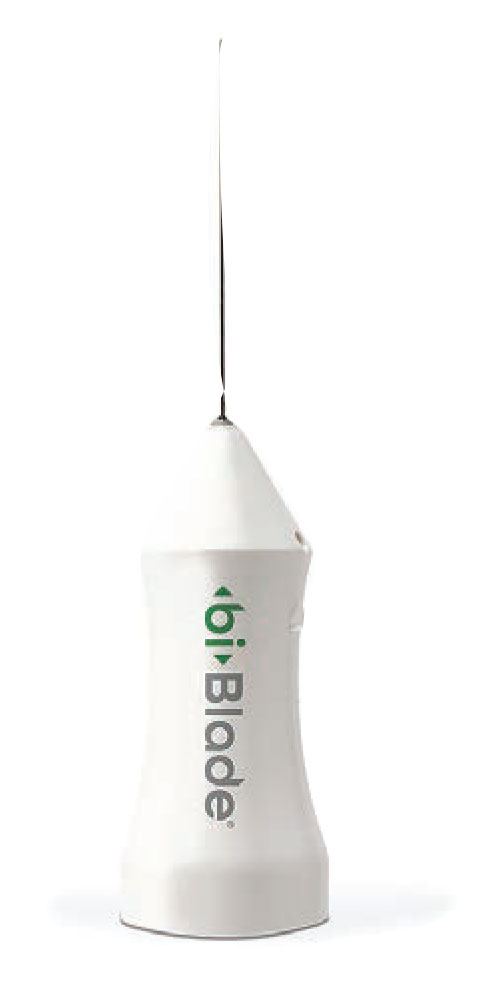 |
The Bi-Blade cuts backwards and forwards to achieve a cut rate of 15,000 cpm. With its permanently open port and 100-percent duty cycle, the Bi-Blade allows for continuous aspiration and holding force and a consistent flow rate, he says. Consistent flow is crucial to vitrectomy procedures, since fluid acceleration is related to pressure variations and stress on the retina.1
Dr. Reddy says one advantage of the Bi-Blade is its predictability. “When we’re working with instrumentation in the eye, it has to be very predictable,” he says. “We’re working with delicate tissues and there’s no room for error. As we get closer to the retina, we want to know what those flow rates are doing, and we don’t want the retina to get into our port, which could cause damage.
“When people talk about vitrectomy systems,” he continues, “they tend to concentrate on a few concepts such as fluid efficiency, speed of vitreous removal and illumination. But I think what is just as important—if not more important —is the idea of what I call ‘fluidic predictability.’ For me, that’s the biggest advantage of the Stellaris Bi-Blade. I know exactly what it’s going to do in every part of the eye. It’s not volatile at the tip like some of the other systems I’ve used, so I’m confident that I can get close to the retina without complications occurring. It’s very predictable.”
Both Dr. Blinder and Dr. Reddy point out that the Bi-Blade is not just for vitreous—it’s multifunctional. For thick diabetic membranes, Dr. Blinder advises backing down the cut rate on the Bi-Blade or dropping to the slow-cut mode so the cutter can function like a pair of small-gauge intraocular scissors. Dr. Reddy agrees, noting that using the cutter as scissors to treat surface pathology in the retina spares the cost of opening up another instrument.
“We’ve come a long way with our instrumentation. We’re getting smaller and better and more efficient in general,” says Dr. Reddy.
Dr. Reddy explains that with smaller-gauge surgery, “you’re less likely to have catch when you remove instruments from port sites. They also don’t leak as much, so there’s less need for sutures, which increases our efficiency in the operating room and reduces complications.” Smaller gauges also reduce postoperative inflammation, making for quicker visual recovery.2
He prefers the 27-gauge Bi-Blade for its efficiency, but says choice of gauge often comes down to surgeon preference and comfort. The introduction of the 23-gauge Bi-Blade accommodates surgeons who are used to 23-gauge cutters.
“My issue with 27-gauge in general is that it takes longer to get rid of the vitreous,” says Dr. Reddy. “But out of all the 27-gauge instruments I’ve used, the Bi-blade appears to be the most efficient. That has been a bit of a surprise to me. I wasn’t anticipating that.”
Dr. Blinder’s probe of choice is presently the 25-gauge Bi-Blade. “I like the size, the efficiency, and the wide range of instrumentation available,” he says. “I also like the 27-gauge Bi-Blade, but I’m still awaiting a few more additions to the range of available accessories.”
27G Ultra Short
The 27G Ultra Short vitrectomy kit (from DORC) was released in June of this year. It’s designed to meet the challenges presented by smaller eyes and to optimize minimally-invasive procedures, says the company. The kit includes three probes, the One-Step cannula system, the Shielded TotalView Endoillumination Probe, and an 8,000 cpm two-dimensional cutter. The probes have a 20- to 26-percent shorter working length than standard 27-gauge instruments.
“It’s hard to fit our regular instruments in small eyes with the current diameters of the non-contact systems,” says Audina Berrocal, MD, professor of clinical ophthalmology and pediatrics at the Bascom Palmer Eye Institute. Dr. Berrocal is the first surgeon in the United States to use the 27G Ultra Short kit. “This instrumentation allows us to move around these very small eyes much more efficiently and without causing complications.”
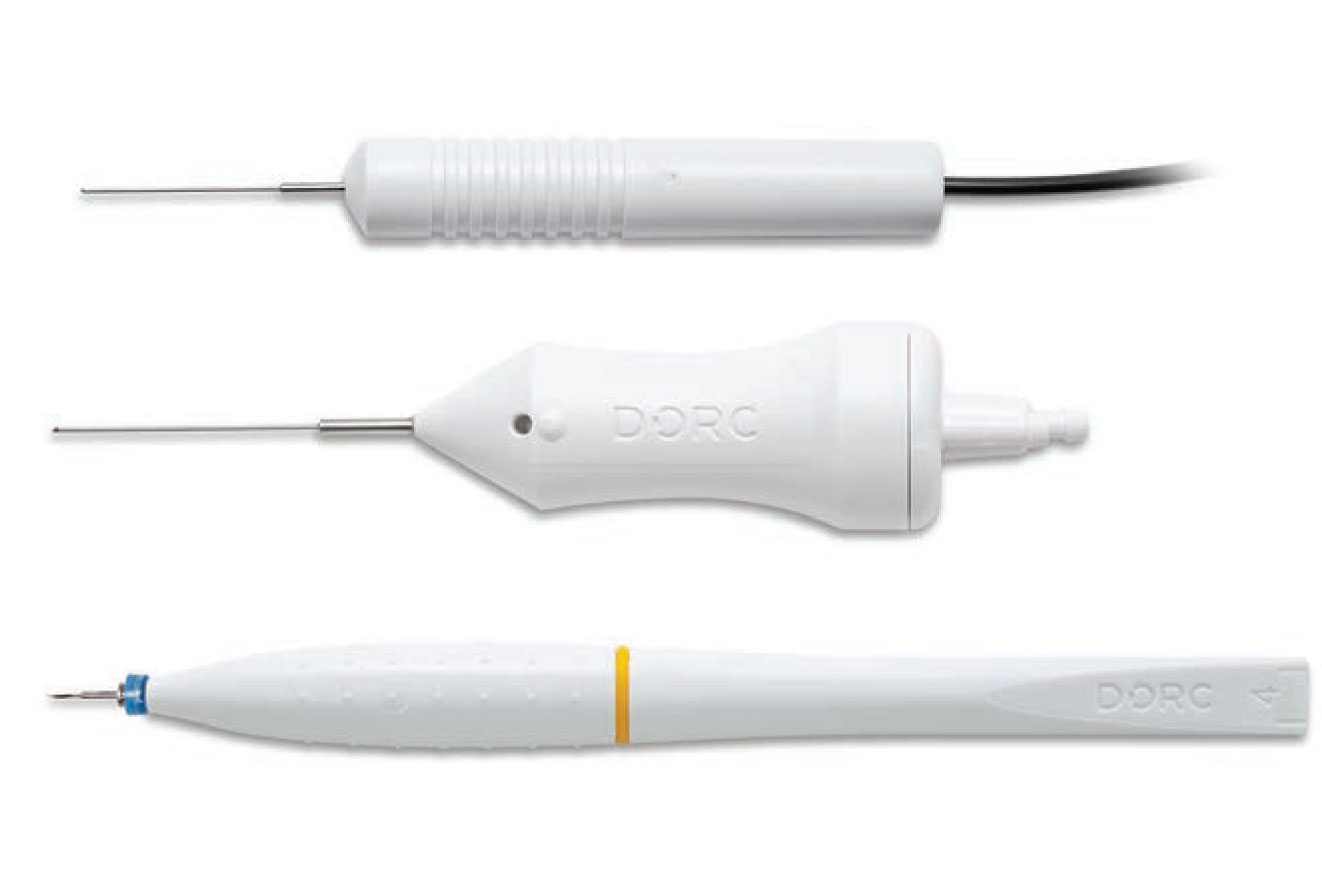 |
The Ultra Short compensates for typical size-related shortcomings of 27-gauge vitrectomy instruments, with increased light output and probe rigidity. “We haven’t had instruments that are short and stiff in 27-gauge before,” she says. “It’s not only the vitrector and light pipe, but also the trocars. They’re shorter and valved perfectly for sutureless surgery. The only other short system out now is 25-gauge, but it doesn’t come with short trocars that are valved. One of the greatest advances in vitreoretinal surgery has been valved trocars. They’ve reduced iatrogenic breaks, retina incarceration and suprachoroidal hemorrhages. They’ve also improved teaching, since they maintain intraocular pressure stability during surgeon changes. And, if all these things are true for adult eyes, they are also true for the eyes of babies and kids with formed vitreous and thin sclerae that collapse easily.”
Dr. Berrocal says that with larger-gauge instruments in small eyes, closing the sclera can be challenging. “The sclera is so thin that sometimes even after suturing, the eyes still leak,” she says. That’s where the Ultra Short comes into play.
“It allows me to do sutureless vitrectomy and leave patients phakic,” Dr. Berrocal adds. “With this instrumentation, I can work on babies and kids too. When I tried the new system, I was able to do a traumatic retinal detachment repair and a lensectomy retinal detachment repair in eyes that measure 24 and 25 mm without a problem. Reaching the nerve to elevate the hyaloid wasn’t an issue.”
Stiffer probes are another key to successful small-gauge surgery, notes Dr. Berrocal. “I didn’t come out of the eye with bent instruments, and I was able to do anterior and posterior work without a problem.”
Dr. Berrocal says the 27G Ultra Short doesn’t come with much of a learning curve. “It’s the same technology but smaller,” she explains. “It fits better in these small eyes where there’s little room. It’s also safer, especially for trainees.”
As for the Ultra Short TDC probe, whose 8,000 cpm is half that of the full-size TDC (16,000 cpm), Dr. Berrocal says, “The TDC cutter is so efficient that even at this small gauge I didn’t feel a difference from my usual 25- and 27-gauge surgery. The illumination was also great. No difference.” For the trocar, however, Dr. Berrocal notes, “The diameter of the head of the trocar and the elevation of it could still be smaller and flatter.”
One other thing she adds is that “the metal of the trocars inserted in the sclera have a nonpolished part that creates more friction, making it less likely to come out during surgery. It creates a better chance at stability. A clever idea.”
Hypervit Dual Blade
The Hypervit Dual Blade vitrectomy probe (Alcon), available in 25- and 27-gauge, was introduced in July for a commercial release that’s planned for later this year. Its open port and dual pneumatic cutting allow for a cut rate of 20,000 cpm. Rishi Singh, MD, a staff physician and Medical Director, Clinical Systems Office, at the Cole Eye Institute, says the Hypervit’s high cut rate lowers the “sphere of influence” on tissue, which allows surgeons to get close to tissue without much vibration or movement. “It’s been helpful with dense vitreous hemorrhages and tractional retinal detachments, where you want to get close to the retinal surface and avoid incarcerating tissue,” he says. “The beveled tip also allows you to get much closer to the tissue. You can use it like scissors.”
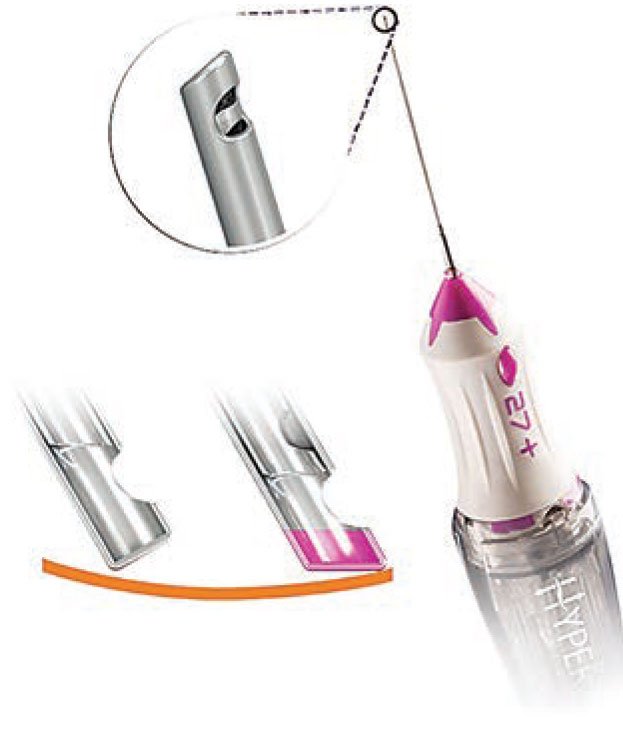 |
Dr. Singh says there isn’t much adjustment needed when first using the Hypervit, but he recommends starting out at a low vacuum level. “It’s a very powerful instrument,” he says. “Start off the vacuum at 200, 250, 300 and increase proportionally. You can still maintain a reasonable duty cycle with the lower vacuum rate because the cut rate is so high.
“Be sure to check the intraocular pressure when you start using the Hypervit,” Dr. Singh adds. “The duty cycle is strong and you want to make sure you’re not cutting too much vitreous too quickly or reducing the IOP too rapidly. Watch your IOP infusion to make sure it’s keeping up with you.”
Hypersonic Vitesse
The Hypersonic Vitesse for the 23-gauge Stellaris Elite system (Bausch + Lomb) uses a piezoelectric ultrasound transducer to liquefy the vitreous at the port. The tip of the hypersonic vitrector vibrates at about 1.7 million vibrations per minute, creating smaller particles and less traction on the retina than traditional pneumatic cutters, the company says.
The first in-human study investigating the safety and performance of the 23-gauge Vitesse concluded that the hypersonic vitrector was effective in core vitreous removal in all tested cases and a “promising alternative” to current guillotine cutters.3
Dr. Blinder has tested the new vitrectomy system. “The Vitesse hypersonic vitrectomy (HV) technology represents a new and innovative approach to vitreous removal,” he says. “HV received U.S. FDA 510(K) clearance in April, 2017, and has had a limited release to a few surgeons in the United States and other countries during an observational trial period. We recently published on our initial experience with 64 patients in the United States.4
“The rationale behind the development of HV was to replace the tube-inside-of-a-tube technology of the pneumatic cutters, simplify the technology with a hollow tube and an open port, and make the notion of duty cycle obsolete,” he explains. “The initial animal model trials went well, and the human trials subsequently have been successful.4,5 The low-power hypersonic vitrectomy probe has been utilized in a wide variety of cases, ranging from a dropped nucleus to a rhegmatogenous retinal detachment and removal of intraocular silicone oil. It’s presently only available in 23-gauge, but there’s active research on the smaller gauges of 25 and 27.”
Dr. Blinder notes there’s a significant learning curve and plenty of new terminology to become accustomed to. “Stroke length is the amplitude of axial oscillation,” he says. “Varying the stroke length is one way to increase or decrease the rate of vitreous liquefaction in the eye. At the same time, the vacuum parameter can also affect the egress of vitreous out of the eye.
“These two parameters are controlled via the foot pedal in a dual yaw setting,” Dr. Blinder continues. “This concept is probably the most difficult one in transitioning from the pneumatic vitrector. There’s also a pulse mode that can be used to assist in vitreous removal. Thus, the transition from the lab setting to the operating room has been a smooth one.”
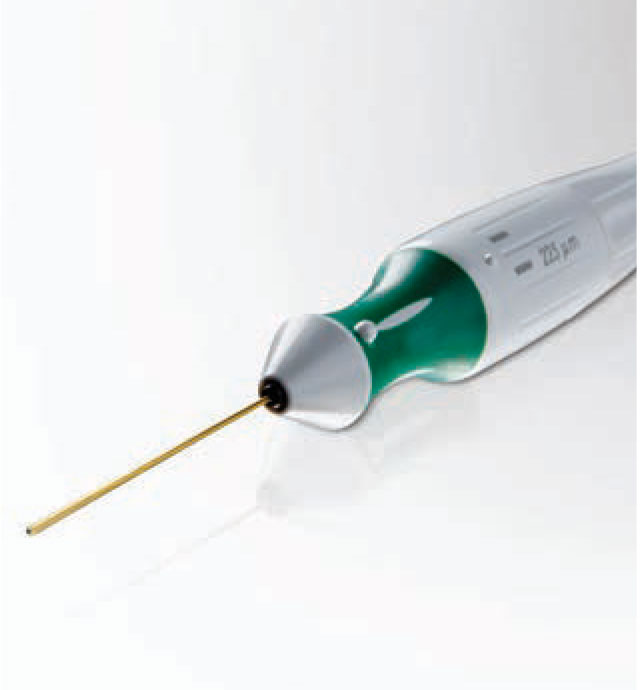 |
Dr. Blinder feels that HV has a high potential for innovation. Changing the port opening or curving the probe itself for use in phakic eyes are just some of the possibilities. Dr. Reddy explains that a curved vitrectomy probe is only possible with hypersonic technology, since there are no moving blades within the needle. He’s currently working on a prototype for a curved probe.
“With the Vitesse technology, we don’t know what the limits are yet,” says Dr. Reddy. “I really think it’s going to be one of those stepping stones in retina where we are able to do things more efficiently than we’ve ever been able to do before, so we’ll wait and see what happens with the Vitesse system.”
FreeFlow Infusion System
The FreeFlow infusion system for retina surgery (Bausch + Lomb) was launched in July for the Stellaris Elite system. It offers a 40-percent increase of infusion flow compared to previous-generation infusion lines, says the company.
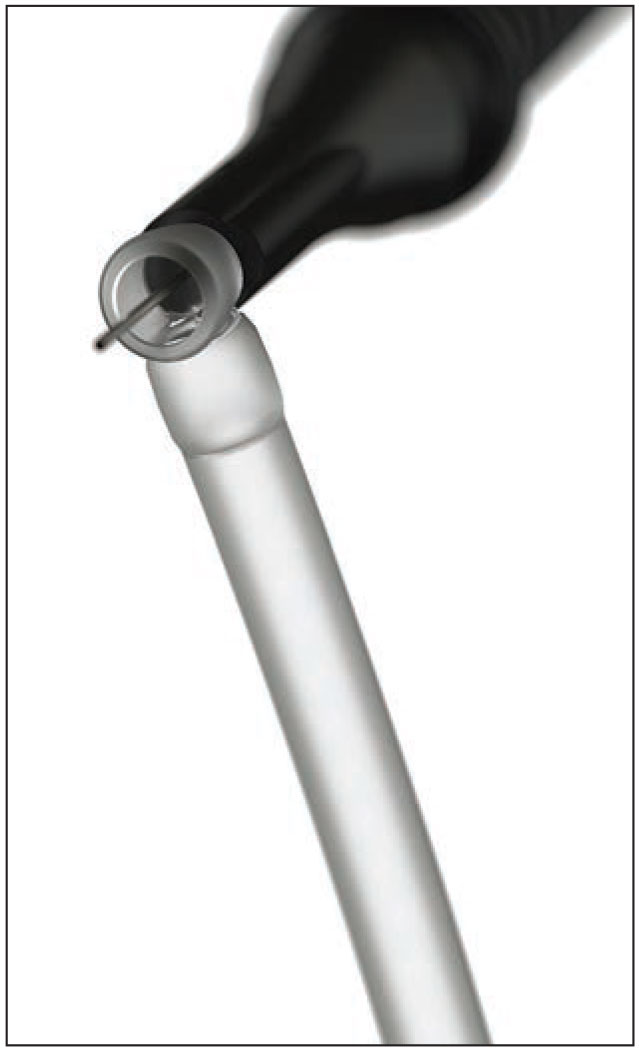 |
According to Bausch + Lomb, a larger inner lumen coupled with an infusion line going over the top of the trocar cannula, rather than inside of it, reduces resistance and makes the increased infusion flow possible. Additionally, the infusion line extends off the top of the cannula at a 30-degree angle, which provides better access to the eye and direct infusion with less torque, says the company.
Sunir Garg, MD, professor of ophthalmology at the Sidney Kimmel Medical College at Thomas Jefferson University, attending physician on the Retina Service at Wills Eye Hospital in Philadelphia, and partner at MidAtlantic Retina, says that having a higher flow rate is great. “The Bi-Blade cutters remove vitreous efficiently, and as a result we’ve needed better flow,” he says.
“The FreeFlow lies flat on the globe, which is different than what we’re used to,” Dr. Garg adds. “So it takes a couple of cases to get the hang of it, but it works really nicely.” REVIEW
Drs. Blinder, Reddy and Garg are consultants to Bausch + Lomb. Dr. Singh is a researcher for Alcon.
1. Rossi T, Querzoli G, Angelini G, et al. Introducing new vitreous cutter blade shapes: A fluid dynamics study. Retina 2014;34:1896-1904.
2. Thompson JT. Advantages and limitations of small gauge vitrectomy. Surv Ophthalmol 2011 Jan 14;56:2:162-172. [Epub ahead of print]
3. Stanga PE, Williams JI, Shaarawy SA, et al. First in-human clinical study to investigate the effectiveness and safety of pars plana vitrectomy surgery using a new hypersonic technology. Retina 2018 Oct 23:1-8. [PMID 30358763] [Epub ahead of print]
4. Blinder KJ, Awh CC, Tewari A, Garg SJ, Srivastava SK, Kolesnitchenko V. Introduction to hypersonic vitrectomy. Curr Opin Ophthalmol 2019;30:133-137.
5. Bausch + Lomb announces completion of 100th clinical case using Vitesse hypersonic vitrectomy system on Stellaris Elite Vision Enhancement System. Bausch + Lomb. Oct 16 2018.



